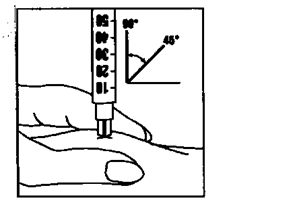NOTICE: This Consumer Medicine Information (CMI) is intended for persons living in Australia.
LUVERIS® 75 IU
Lutropin alfa (rch)
Consumer Medicine Information
What is in this leaflet
This leaflet answers some common questions about Luveris.
It does not contain all the available information.
It does not take the place of talking to your doctor or pharmacist.
All medicines have benefits and risks. Your doctor has weighed the risks of you using Luveris against the benefits it is expected to have for you.
If you have any concerns about using this medicine, ask your doctor, nurse or pharmacist.
Keep this information with your medicine.
You may need to read it again later.
What Luveris is used for
Luveris is a medicine containing lutropin alfa, a recombinant luteinising hormone (LH), which is essentially similar to the hormone found naturally in humans, but it is made by means of biotechnology. It belongs to the family of hormones called gonadotrophins, which are involved in the normal control of reproduction.
Luveris is for the treatment of women who have been shown to produce very low levels of some of the hormones involved in the natural reproductive cycle. The medicine is used together with another hormone called follicle stimulating hormone (FSH) also known by the brand name GONAL-f, to bring about the development of follicles which are in the ovaries, the structures maturing the eggs (ova). It is followed by treatment with a single dose of human chorionic gonadotrophins (hCG), which leads to the release of an egg from the follicle (ovulation).
Ask your doctor if you have any questions about why Luveris has been prescribed for you.
Your doctor may have prescribed it for another reason.
Luveris is available only on a doctor’s prescription.
Luveris is not habit-forming.
Before you are given Luveris
When you must not use it
Do not use Luveris if:
you have a history of allergy to gonadotrophins or to any of the ingredients listed at the end of this leaflet.
Symptoms of an allergic reaction may include:
shortness of breath
wheezing or difficulty breathing
swelling of the face, lips, tongue or other parts of the body
rash, itching or hives on the skin.
Do not use Luveris if:
you are pregnant
you are breastfeeding
your ovaries are enlarged
you have an unexplained ovarian cyst
you have unexplained vaginal or uterine bleeding
you have cancer of the ovaries, uterus or breasts
you have tumours of the pituitary gland or hypothalamus.
If you are not certain whether these conditions apply to you, or you are worried about anything on this list, tell your doctor.
Do not use this medicine after the expiry date (month/year) on the packaging has passed, or if the packaging is torn or shows signs of tampering.
If your medicine has expired or is damaged, return it to your pharmacist or clinic for disposal.
If you are not sure whether you should start using Luveris, talk to your doctor.
Before you start to use it
Your doctor will assess you and your partner’s infertility. This may include tests for other medical conditions, which may interfere with your ability to become pregnant. If necessary, other medical conditions may be treated before starting infertility treatments including Luveris.
Tell your doctor if you are breastfeeding.
Luveris should not be used while you are breastfeeding.
Tell your doctor if you have any allergies to any foods, dyes, preservatives or any other medicines.
Tell your doctor if you have or have had any medical conditions, especially the following:
premature menopause
disorders of the adrenal glands
disorders of the thyroid gland
high prolactin levels in the blood
fibroid tumours in your uterus which would make pregnancy impossible
if you have been through menopause
kidney disease
liver disease
you or your family have increased risk factors for developing blood clots, e.g. stroke, heart attacks
porphyria or a family history of porphyria.
Treatment with Luveris may increase your risk of developing a condition called ovarian hyperstimulation syndrome (OHSS). This is when the ovaries overreact to the hormonal treatment and become larger.
The most common symptom is lower abdominal pain. During stimulation your doctor will monitor your treatment using ultrasound and blood tests to help determine if you are likely to develop OHSS. If necessary, your doctor will delay or cancel your Luveris injection. You may also be advised to refrain from sexual intercourse or use barrier methods until the end of the cycle if this occurs.
Compared to natural conception, the frequency of multiple pregnancies and births is increased in patients receiving this treatment. The majority of these are twins. Your doctor will monitor your ovarian response to minimise the chance of multiple pregnancies, because of the greater risks they carry for mothers and babies.
Compared to natural conception, the frequency of pregnancy loss is higher in patients undergoing treatments to stimulate follicle growth for ovulation induction.
There may be a slightly increased risk of birth defects in women using assisted reproductive technologies. This may be due to increased maternal age, genetic factors, multiple pregnancies or the procedures. An effect of medicines used to induce ovulation has not been excluded.
Talk to your doctor about any concerns you may have before undergoing treatment or before you start using Luveris.
Taking other medicines
Tell your doctor if you are taking any other medicines, including:
all prescription medicines
all medicines, vitamins, herbal supplements or natural therapies you buy without prescription from your pharmacy, supermarket, naturopath or health food shop.
Some medicines may be affected by Luveris or may affect how well it works.
Your doctor or pharmacist has more information on medicines to be careful with or to avoid while using Luveris.
How Luveris is given
Follow all directions given to you by your doctor or pharmacist carefully.
They may differ from the information contained in this leaflet.
Treatment with Luveris should be started under the supervision of a specialist doctor experienced in fertility treatment.
Luveris is given as a course of daily subcutaneous (under the skin) injections at the same time as another medicine, follitropin alfa (GONAL-f).
How much to inject
Your doctor will tell you how much Luveris to use and when to inject it.
It is recommended that your treatment with Luveris starts at 75 IU daily along with 75 IU to 150 IU GONAL-f but your doctor may adjust your dose of Luveris or GONAL-f depending on your individual response to treatment. Clinical results have shown the minimal effective dose of Luveris is 37.5 IU.
Each vial is for single use in one patient only. Discard any residue.
How to inject
Luveris is given as a subcutaneous (under your skin) injection in the lower abdominal area or thigh, each day normally for up to 3 weeks.
Luveris is intended to be injected by you or by your partner.
Alternatively, your doctor or a nurse may give you these injections.
If your doctor or nurse decides you can give the injections yourself, the doctor or a nurse will teach you the injection technique.
Do not self-inject until you are sure of how to do it.
Read the Instructions for Use provided in the pack carefully before commencing injections.
Your partner may be trained to give the injection at home.
Where to inject
Luveris is usually given in the lower abdominal area (except around the navel and waistline) or the front of your thigh.
Do not inject into any areas in which you feel lumps, firm knots, depressions, pain or discolouration.
Talk to your doctor if you find anything unusual when injecting.
If you forget to inject Luveris
If you forget an injection or are not sure what to do, contact your doctor or nurse immediately for advice.
Do not inject a double dose on any day.
Ask your doctor if you are not sure what to do or have trouble remembering to inject your medicine.
If you injected too much
Immediately contact your doctor or the Poisons Information Centre (In Australia telephone 131 126. In New Zealand telephone 0800 764 766) if you are concerned that you have given yourself too much or someone else has injected themselves with Luveris.
While you are using Luveris
Your doctor will carefully monitor your response using ultrasound and blood tests before and during treatment with Luveris.
Things you must do
See your doctor regularly.
Your doctor will monitor you closely throughout your treatment.
Tell your doctor immediately if you become pregnant while using Luveris.
If you are about to be started on any new medicine, tell your doctor and pharmacist that you are using Luveris.
If you plan to have surgery, tell your doctor or dentist that you are using Luveris.
Tell all the doctors, dentists and pharmacists who are treating you that you are using Luveris.
Things you must not do
If you are self-injecting do not:
Stop using Luveris without telling your doctor.
Change the dose unless your doctor tells you to. Changing your dose without advising your doctor can increase your risk of unwanted side effects or prevent the medicine from working properly.
Give this medicine to anyone else, even if their symptoms seem similar to yours or if they have the same condition as you.
Things to be careful of
Be careful driving or operating machinery until you know how Luveris affects you.
Side effects
Tell your doctor as soon as possible if you do not feel well while taking Luveris.
All medicines can have side effects. Sometimes they are serious, most of the time they are not.
Do not be alarmed by this list of possible side effects.
You may not experience any of them.
Ask your doctor or pharmacist to answer any questions you may have.
Tell your doctor immediately, or go to Accident and Emergency section of your nearest hospital if you experience any of the following:
signs of allergic reactions including: swelling of the face, lips, tongue or other parts of the body; shortness of breath, wheezing or difficulty breathing; severe skin rash, itching or hives
vaginal bleeding
inflammation, swelling or pain in your legs
signs of severe OHSS such as severe lower abdominal pain, severe pelvic pain, nausea, vomiting, diarrhoea followed by rapid weight gain, reduced amounts of urine and shortness of breath
warning signs of stroke or heart attack
warning signs of blood clots (such as pain, warmth, redness, numbness or tingling in arm or leg).
Tell your doctor if you notice any of the following and they worry you:
headache
nausea, vomiting, diarrhoea, abdominal discomfort or abdominal pain
ovarian cysts, breast pain and pelvic pain
local reactions at the injection site, such as pain, redness or swelling.
Ectopic pregnancy (embryo implanted outside the womb) may occur, especially in women with a history of prior tubal disease.
Tell your doctor if you notice anything else that is making you feel unwell.
Other side effects not listed above may also occur in some patients.
After using Luveris
Storage
Prior to reconstitution keep the vials in a cool dry place where the temperature is below 25°C.
Store in the original package in order to protect from light.
Once the Luveris powder is dissolved with the solvent provided, it should be injected immediately. This is due to the solvent not containing preservative. Any solution that is left over must be discarded.
Do not use the dissolved solution if it contains particles or is not clear.
Do not use the product after the expiry date printed on the label. Do not use Luveris if you notice any visible signs of deterioration or damage to the container.
Do not use Luveris on anyone else.
It is for your use only.
Do not store it or any other medicine in the bathroom or near a sink.
Do not leave it in the car.
Keep this medicine where children cannot reach it.
A locked cupboard at least one-and-a-half metres above the ground is a good place to store medicines.
Disposal
If you are self-injecting, you should discard all sharps into a disposal unit.
Each vial of medicine is for single use only. Any medicine left over after injecting should be discarded.
If you have any Luveris that has expired or is left over from your treatment, refer this to your clinic.
Product description
What it looks like
Luveris is a sterile white powder in a vial.
Each vial of Luveris contains 75 IU lutropin alfa.
Luveris is available in packs of 1 vial. Each pack also contains a vial of 1 mL Water for Injections.
Ingredients
Active ingredient:
Lutropin alfa (rch)
Inactive ingredients:
Polysorbate 20
Dibasic sodium phosphate dihydrate
Monobasic sodium phosphate monohydrate
Methionine
Sucrose
Phosphoric acid
Sodium hydroxide.
Supplier
Luveris is supplied in Australia by:
Merck Healthcare Pty Ltd
Suite 1, Level 1, Building B
11 Talavera Road
Macquarie Park NSW 2113
For enquiries call: 1800 633 463
E-mail: [email protected]
Luveris is supplied in New Zealand by:
Healthcare Logistics
58 Richard Pearse Drive
Airport Oaks, Auckland
For enquiries call: 0800 426 252
E-mail: [email protected]
Australian Registration Number
AUST R 95042
This leaflet was prepared in February 2020.
A012-0220
INSTRUCTIONS FOR USE
How should I administer Luveris 75 IU
Luveris is given by injection under the skin. Each vial is for single use only.
Sometimes the injection will be given to you by a doctor or nurse, or you or your partner may be trained to give the injection at home.
If you administer Luveris to yourself, please carefully read the following instructions:
Follow the directions below for mixing and injecting Luveris.
1.Wash your hands.
It is important that your hands and the items you use be as clean as possible.
2.Assemble everything you need.
Please note that alcohol swabs, syringes and needles are not contained in the package. Find a clean area and lay out everything:
two alcohol swabs,
one solvent vial,
one vial containing the medicinal product,
one syringe,
one big needle for reconstitution,
a fine-bore needle for subcutaneous injection.
3.Drawing up the solvent:

Remove the protective cap from the solvent vial. Attach the needle for reconstitution (the bigger needle) to the syringe and draw up some air into the syringe by pulling the plunger to approximately the 1 mL mark. Then, insert the needle into the vial, push the plunger to expel the air, turn the vial upside down and gently draw up all the solvent.
Set the syringe down carefully on the work-surface taking care not to touch the needle.
4.Preparing the injection solution:

Remove the protective cap from the Luveris powder vial, pick up your syringe and slowly inject the solvent into the vial of Luveris. Swirl gently without removing the syringe. Do not shake. The powder should dissolve into a clear solution immediately. Do not use if the solution is not clear. Up to 3 containers of powder may be dissolved in 1 mL of solvent.

Turn the vial upside down, gently draw the solution back into the syringe.
5.Injection:

Change the needle for the fine-bore needle and remove any air bubbles: If you see air bubbles in the syringe, hold the syringe with the needle pointing upwards and gently flick the syringe until all the air collects at the top. Gently push the plunger until the air bubbles are gone.

Immediately inject the solution: Your doctor or nurse will have already advised you where to inject (e.g. tummy, front of thigh). Wipe the chosen area with an alcohol swab. Firmly pinch the skin together and insert the needle at a 45° to 90° angle using a dart-like motion. Inject under the skin, as you were taught. Do not inject directly into a vein. Inject the solution by pushing gently on the plunger. Take as much time as you need to inject all the solution. Immediately withdraw the needle and clean the skin with an alcohol swab using a circular motion.
6.Dispose of all used items:
Once you have finished your injection, immediately discard all needles and empty glass containers in a sharps container. Any unused solution must be discarded.
Source: Read Full Article
